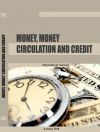
Автор книги: Виктор Миловидов
Жанр: Иностранные языки, Наука и Образование
Возрастные ограничения: +12
сообщить о неприемлемом содержимом
Текущая страница: 3 (всего у книги 16 страниц)
Monetarism in Action
A little old lady sold pretzels on a street corner for 25 cents each. Every day a young man would leave his office building at lunch time. As he passed her pretzel stand, he would leave her a quarter, but would never take a pretzel. This went on for more than five years. The two of them never spoke. One day as the young man passed the old lady's pretzel stand and left his quarter as usual, the pretzel woman spoke to him: «Sir, I appreciate your business. You are a good customer, but I have to let you know that due to inflation the price of pretzels has increased to 35 cents.»
* * *
– Why do Economists provide estimates of inflation to the nearest tenth of a percent?
– To prove they have a sense of humour.
* * *
Inflation allows you to live in a more expensive neigbourhood without moving.
Слова и выражения:
appreciate – высоко оценивать
estimate – оценивать (обычно заранее), прогнозировать
pretzel – маленький соленый хрустящий крендель
quarter – монета в 25 центов
pretzel stand – лоток с кренделями
the nearest tenth of a percent – ближайшая десятая доля процента
sense of humour – чувство юмора
Exercise 3
Answer the questions:
1. Why didn't the young man take a pretzel?
2. What was the inflation rate in the five years the story about pretzels is speaking of?
3. Why is it possible to live in a more expensive house in the times of inflation?
Monetary Policy
Monetary policy is the most important instrument of government policies. It is carried out by the central bank whose actions are affecting economic activity.
Monetary policies are on the demand side of macroeconomics. They stimulate or discourage spending on goods and services. Monetary policy is used to damp, perhaps even eliminate, fluctuations in aggregate demand. It is not a supply-side instrument. Central banks have no tools to affect productivity and real economic growth.
If a central bank is carrying out expansionary monetary policy, the aggregate spending (purchase of goods and services by consumers, businesses, and governments) increases. In its turn, these new demands raise output and employment, as well as prices. They also speed up inflation.
A central bank is usually called a «bankers' bank», whose customers are not ordinary citizens but commercial banks, savings banks, savings and loan associations, and credit unions. They hold deposits in and borrow from the central bank and are supposed to follow the central bank's reserve requirements and other regulations.
Banks are to hold reserves equal to prescribed percentages of their deposits. These reserves are regularly tested, reserve tests being the main tool of monetary policy. In order to pass the reserve tests commercial banks need the central bank's funds, and so, the latter controls the supply. To acquire reserve balances banks sell their securities to the central bank. In other cases the central bank can extinguish reserve balances by selling its securities to commercial banks. These open-market operations are the instrument of monetary policy. The central bank open-market operations are interventions in this market.
Another tool of central bank policy is the setting of the discount rate. Money rates are costs of funds that the banks can lend to their customers. When discount rates go up, commercial banks have to raise their lending rates. The commercial banks' customers then borrow and spend less, which affects business throughout the economy. So, controlling money markets and banks, the central bank influences the whole financial system, this influence affecting the national economy in general.
Слова и выражения:
damp – угнетать
eliminate – уничтожать, искоренять
expansionary – экспансионистская
extinguish – уничтожать, гасить
latter – последний
(из упомянутых)
lend – ссужать, давать взаймы
ordinary – обычный, ординарный
test – тест; тестировать
demand side – относящийся к спросу (букв.: стороне спроса)
supply-side – относящийся к предложению
speed up – ускорять(ся)
savings bank – сберегательный банк
savings and loan association – кредитно-сберегательная ассоциация
credit union – кредитный союз
hold deposits – держать депозиты
reserve requirements – резервные ограничения
equal to prescribed deposits – равный предписываемому объему депозитов
in other cases – в других случаях
open-market – относящийся к открытому рынку
interventions – интервенции
discount rate – ставка рефинансирования
Exercise 4
Answer the questions:
1. What financial institution is monetary policy carried out by?
2. What side of macroeconomics (the demand or the supply side) are the monetary policies on?
3. What is the main objective of the monetary policy?
4. What happens in case a central bank carries expansionary monetary policy?
5. What financial institutions are a central bank's customers?
6. What is a reserve test?
7. What do commercial banks have to do in order to acquire reserve balances?
8. How can a central bank extinguish reserve balances?
9. What is a discount rate?
10. How does the setting of the discount rate affect the national economy?
What Is Keynesianism?
1
– Why is a physician held in much higher esteem than a Keynesian economist?
– A physician makes an analysis of a complex illness whereas a Keynesian economist makes you ill with a complex analysis!
2
If you put two economists in a room, you get two opinions, unless one of them is Lord Keynes, in which case you get three opinions.
Слова и выражения:
physician – врач, терапевт
whereas – в то время как
esteem – уважение
hold in much higher esteem – питать большее уважение
make ill – делать больным
in which case – в коем случае
Keynesian Economics
Keynesian economics is a theory of total spending in the economy (called aggregate demand) and of its effects on output and inflation. The main points of the theory are as follows.
First, the Keynesians think that aggregate demand is affected by a great variety of public and private economic decisions. Of the public decisions most important are monetary and fiscal measures taken by the government and the central bank (i.e., spending and tax). Quite recently Keynesians believed that monetary policy was powerless, and advocated fiscal measures as the means to fine-tune the economy. Today the majority of both Keynesians and monetarists believe that both fiscal and monetary policy affect aggregate demand.

Secondly, changes in aggregate demand have their greatest short-run impact not on prices, but on real output and employment. The famous Phillips curves show that inflation changes only slowly when unemployment changes. Monetary policy produces real effects on output and employment only if some prices are stable and do not adjust instantly.
Thirdly, Keynesians suppose that prices and, especially, wages respond slowly to changes in supply and demand, resulting in shortages and surpluses, especially of labour.
Contrary to monetarists's view Keynesians do not think that the typical level of unemployment is ideal. With them unemployment is more of a problem than inflation. Keynesians also state that macroeconomic fluctuations significantly reduce economic well-being, that recessions or depression are economic maladies, not efficient market responses to unattractive opportunities, as the monetarists suppose.
Hence Keynesians advocate activist stabilization policy to reduce the amplitude of the business cycle, which they rank among the most important of all economic problems. So, Keynesians developed the notion of a fiscal/monetary mix to control spending and the balance of payments simultaneously. Well-timed changes in taxes and government spending were to be balanced to control the economy. If this macro measures didn't work out as intended, the goverment should administer price and wage controls. Keynesians identified themselves as engineers who adjust the controls and, when necessary, design new controls to maintain just the right mix of policies.
In order to know how to develop policies, Keynesians worked out forecasting models with hundreds of equations. These models are processed on powerful computers simulating possible changes in economy affected by different policy actions.
Monetarists are critical of these models, and prefer stable policy rules that reduce variability and uncertainty for private decision makers. They suppose that government should maintain the long-run stability, and not interfere into economic life too often. Monetarists see such efforts as frequently destabilizing.
Слова и выражения:
activist – активист; активный политик
adjust – приспосабливать, регулировать
administer – применять, вводить, внедрять
advocate – защищать, поддерживать
aggregate – совокупный
amplitude – амплитуда
curve – кривая (линия)
equation – уравнение
fiscal – фискальный, имеющий отношение к государственной казне
fluctuation – колебание
forecast – прогноз; прогнозировать
hence – отсюда
ideal – идеальный
impact – удар, воздействие, импульс
instantly – моментально
interfere – вмешиваться, мешать
maintain – поддерживать
malady – болезнь, расстройство
opportunity – возможность, шанс
process – обрабатывать
respond – отвечать
response – ответ
shortage – нехватка, недостаток (чего-либо)
simulate – симулировать
simultaneously – одновременно
state – утверждать
surplus – избыток
typical – типичный
unattractive – непривлекательный
variability – изменчивость, вариативность
Keynes John Maynard – Джон Кейнс, известный американский экономист
a great variety – значительное разнообразие
fine-tune – (тонко) настраивать
majority – большинство
short-run – краткосрочный
contrary to – в противоположность
more of a problem than – (является) большей проблемой, чем
well-being – благосостояние
rank among – занимать положение среди
fiscal/monetary mix – смесь монетаристских и фискальных мер
well-timed – хорошо спланированный во времени
as intended – как было задумано, как предполагалось
identify as – отождествлять (с кем-либо)
critical of – критически настроенный (к)
long-run – долгосрочный
Exercise 5
Answer the questions:
1. What theory has the Keynesians developed?
2. What is aggregate demand affected by, in Keynesians' opinion?
3. What are the most important public decisions affecting aggregate demand?
4. How has the Keynesians' attitude towards monetary measures changed recently?
5. What do changes in aggregate demand have the greatest short-time impact on?
6. What do Keynesians think about the typical level of unemployment?
7. What is their opinion on macroeconomic fluctuations?
8. What economic policies do Keynesians advocate?
9. Who do Keynesians identify themselves as?
10. What processes do forecasting models simulate?
Forecasting and Econometric Models
An econometric model is a tool that helps economists forecast future developments in the economy. Econometricians study past relationships between variables such as consumer spending and gross national product, and then try to forecast how changes in some variables will affect the future course of others.
To make such calculations econometricians need an economic model, and a theory of how different factors in the economy interact. For convenience, economists use mathematical models, which are a set of equations that describe various relationships between variables. These models are used to predict future trends in the economy, and are called econometric models.
Actually, no econometric model is ever truly complete and absolutely reliable both as a whole and in details. Some variables cannot be predicted because they are determined by forces «outside» the model. For example, a reliable realistic model must include taxes collected by the government because taxes make the gap between the gross income earned by households and businesses and the net income (disposable income) available for spending. The taxes collected, in their turn, depend on the tax rates in the income tax laws. If econometricians wish to forecast economic activity several years into the future, they have to include the anticipated future tax rates into their model's information base. So, they are supposed to make assumptions about possible changes in future income tax rates, the monetary policy that will be carried out by the central bank, and many other such «outside of the model» (or exogenous) variables in order to forecast all the «inside of the model» (or endogenous) variables. Being incomplete, econometric models sometimes are far from offering reliable predictions.
Слова и выражения:
anticipate – предполагать, предвосхищать
calculations – расчеты
complete – полный, завершенный
course – курс
determine – определять
econometric – эконометрический
econometrician – эконометр
econometrics – эконометрика
endogenous – эндогенный (внутренний, присущий системе)
exogenous – экзогенный (внешний по отношению к системе)
forecast – прогноз; прогнозировать
gap – пробел, брешь
include – включать
incomplete – неполный
interact – взаимодействовать
predict – предсказывать
prediction – предсказание
reliable – надежный
variable – переменная
gross national product – совокупный национальный продукт
as a whole – (взятый) в целом
in details – в деталях
gross income – совокупный доход
net income – чистый доход после выплаты налогов
и иных обязательств
several years into the future – на несколько лет в будущее
information base – информационная база
Exercise 6
Answer the questions:
1. What do econometricians study?
2. What economic variables do they take into account while producing their models?
3. What is an economic model?
4. Why cannot some economic variables be predicted?
5. What economic variables are called exogenous and endogenous?
How Does Forecasting Work?
1
An economic forecaster was known to have an horseshoe prominently displayed above the doorframe of his office. Asked what it was for, he replied that it was a good luck charm that helped his forecasts. But do you believe in that superstition? he was asked, and he said, «Of course not!» But then why do you keep it? «Well,» he said, «it works whether you believe in it or not.»

2
An econometrician and an astrologer are arguing about their subjects. The astrologer says, «Astrology is more scientific. My predictions come out right half the time. Yours can't even reach that proportion.» The econometrician replies, «That's because of external shocks. Stars don't have those.»
3
An economist is a trained professional paid to guess wrong about the economy. An econometrician is a trained professional paid to use computers to guess wrong about the economy.
4
Economic statistics are like a bikini, what they reveal is important, what they conceal is vital.
5
Forecasting is like trying to drive a car blindfolded and following directions given by a person who is looking out of the back window.
Слова и выражения:
argue – спорить, аргументировать
astrologer – астролог
astrology – астрология
bikini – бикини (тип дамского купального ансамбля)
blindfolded – с завязанными глазами
charm – очарование, чары
doorframe – дверная рама
external – внешний
guess – догадываться, строить догадки
horseshoe – лошадиная подкова
luck – успех, удача
prominently – на видном месте
proportion – пропорция
shock – удар, потрясение, шок
superstition – предрассудок
vital – жизненно необходимый
good luck charm – талисман, притягивающий удачу
come out right – «получаться», «выходить»
guess wrong – строить неверные предположения, догадки
Exercise 7
Answer the questions:
1. What did the forecaster have the horseshoe displayed for?
2. How often are the astrologer's forecasts correct?
3. Why can't econometrics reach that proportion of correctness?
4. How do econometricians use computers in their guesswork about economy?
5. What do bikini… Well, I never…
How to Use Mathematics in Economics. The Equation of Earnings
Engineers and scientists will never make as much money as business executives. Now a rigorous mathematical proof has been developed that explains why this is true:
Postulate 1: Knowledge is Power.
Postulate 2: Time is Money.
As every engineer knows,
Work = Power х Time
Since Knowledge = Power, and Time = Money, we have:
Work = Knowledge х Money
Solving for Money, we get:
Money = Work / Knowledge
Thus, as Knowledge decreases, Money increases, regardless of how much Work is done.
Conclusion: The Less you Know, the More you Make.
Слова и выражения:
conclusion – заключение
decrease – уменьшаться
executive – исполнительный
increase – увеличиваться
postulate – условие (постулируемое условие)
rigorous – строгий
solving – здесь: преобразовывая математическое выражение
business executives – управляющий производством
regardless of – вне зависимости от
Marxism
Karl Marx remains so far one of the most controversial figures in the field of economics. His criticism of capitalism, and his promise of a harmonious socialist future, inspired a revolution of global proportions which brought some economic and political systems to disaster. But, despite the collapse of socialism in the Eastern Europe it is evident that the Marxist dream had firm roots in reality. To understand those one has to look through general characteristics of Marxism – its economics, social theory, and overall vision.
The core of Marxian economics is the labour theory of value elaborated in Capital (1867). Its general issue is rather simple: the value of a commodity can be measured by the amount of labour hours that are necessary to produce that commodity.
To illustrate this Marxists usually employ pretty simple examples. If a watch usually takes twice as long to produce as a pair of jeans, for example, then watches are twice as valuable as jeans. In the long run the competitive price of watches will be twice the price of jeans, no matter what the value of the physical inputs is.
Marx was not the inventor of the theory. Marxism is based on the classical economics of the mid nineteenth century, namely on Adam Smith's The Wealth of Nations (1776) and David Ricardo's Principles of Political Economy (1817). But Marx went much further than his predecessors. He turned his theory against this advocates of capitalism. Arguing that his theory is supposed to explain the value of all commodities, Marx includes there also the commodity that workers sell to capitalists for a wage. Marx called this commodity «labour power». This move was imbued with strong political implications.
Labour power is the worker's capacity to produce commodities. The value of labor power depends on the number of labour hours it takes society to produce a person who is fit for work (to give him food, clothes, and shelter). Therefore, the worker's wage must correspond to this number of hours. If five hours of labour are needed to maintain the worker's capacity to produce commodities, and one labour hour is equal to one dollar, then the proper wage must be five dollars a day.
But, if all goods and services are sold at prices that reflect their true value (corresponding to labour hours), how can capitalists enjoy profits, which they really do?
The answer is as follows: the owners of the means of production use their privileged and powerful position to exploit workers by making them work more hours than are necessary to create the worker's labour power. Paying each of their workers five dollars a day, capitalists make them work twelve, and even more, hours a day, thus producing «surplus value».
The mainstream economists argue this core idea of Marxism, showing that capitalists earn profits not by exploiting workers, but by taking risks and organizing efficient production.
Even more politically biased is Marx's Economic and Philosophic Manuscripts of 1844, where the author undertook to explain the general logic of the human history. The key role is played here by his concept of alienation.
Marxists suppose that people by nature are free, creative beings. But the modern, industrialized world does not allow man to realize his freedom and creativity, as this world is apparently beyond our full control. The market economy – through the spontaneous laws of supply and demand – blocks our ability to influence any of our individual and collective destinies.
Although workers produce things for the market, market forces control things; workers do not. Workers are alienated from the things they produce, and work itself, loosing its creative implications, becomes monotonous, and suitable for machines rather than free, creative people. Eventually people themselves become robotlike machines that have lost touch with human nature. Marxists propose then to abolish the market-based society and replace it with a democratic, comprehensively planned society.
Marx called his theory «scientific socialism» to prove his assumptions that throughout the course of human history, a profound struggle has developed between those who «have» and those who «have not», the bourgeoisie and the proletariat. This struggle of classes is the law of history, and eventually proletariat will win the battle.
A socialist revolution, say Marxists, is inevitable.
Слова и выражения:
abolish – уничтожать, отменять
advocate – защитник; защищать
alienation – отчуждение
apparent – очевидный
biased – пристрастный, отражающий пристрастие к чему-либо
block – блокировать, предотвращать, запрещать, препятствовать
bourgeoisie – буржуазия
capacity – мощность, способность, возможность
collapse – падение
comprehensive – понятный, умопостигаемый
controversial – противоречивый, спорный
core – ядро
creativity – творческое начало, «креативность»
destiny – предназначение, судьба
disaster – катастрофа
elaborate – детально разрабатывать
evident – очевидный
firm – твердый
global – глобальный, всемирный, мировой
harmonious – гармоничный
imbue – наделять
implication – следствие, нечто подразумеваемое
inevitable – неизбежный
inspire – вдохновлять
issue – пункт, выпуск
mainstream – главное направление (букв.: основное течение)
maintain – поддерживать
Marxism – марксизм
monotonous – монотонный
namely – а именно
overall – полный, совокупный, целостный
predecessor – предшественник
privileged – привилегированный
profound – глубокий, основательный
proletariat – пролетариат
robotlike – подобный роботу
root – корень
shelter – укрытие, защита; укрывать, защищать
spontaneous – спонтанный
so far – до сих пор, по настоящее время
labour theory of value – теория стоимости рабочей силы
take twice as long – занимать вдвое больше времени
twice as valuable as– в два раза более ценный, чем
competitive price – конкурентоспособная цена
twice the price – вдвое дороже
physical input – материальные составляющие
mid nineteenth century – середина девятнадцатого века
fit for work – способный к работе
enjoy profits – получать прибыли
surplus value – прибавочная стоимость
beyond control – не поддающийся контролю
lose touch – утратить связь
Exercise 8
Answer the questions:
1. What does one have to do in order to understand why Marxism inspired revolutions?
2. What theory is the core of Marxian economics?
3. How can the value of a commodity be measured, according to Capital?
4. What economic theories was Marxism based on?
5. How was the labour power value calculated?
6. How can a capitalist make a worker produce the «surplus value»?
7. What idea makes the key issue of Marxist historical concept?
8. How can free market block workers' creativity?
9. What is the Marxian way to democratic society?
10. What is the main law of history, in Marxists' opinion?
Правообладателям!
Это произведение, предположительно, находится в статусе 'public domain'. Если это не так и размещение материала нарушает чьи-либо права, то сообщите нам об этом.








































